One unique business strategy model - AIPL has been gaining traction - but what does it stand for? As we delve deeper into the AIPL model, we will explore its definition, practical examples, ready-to-use templates, and a comprehensive guide to help you navigate this model. Ready to unlock a new dimension in customer journey mapping? Let's dive into the world of AIPL together.
Overview: What is the AIPL Model?
Definition of the AIPL Model
The AIPL model is a marketing model originating from the United States, representing the stages of Awareness, Interest, Purchase, and Loyalty.
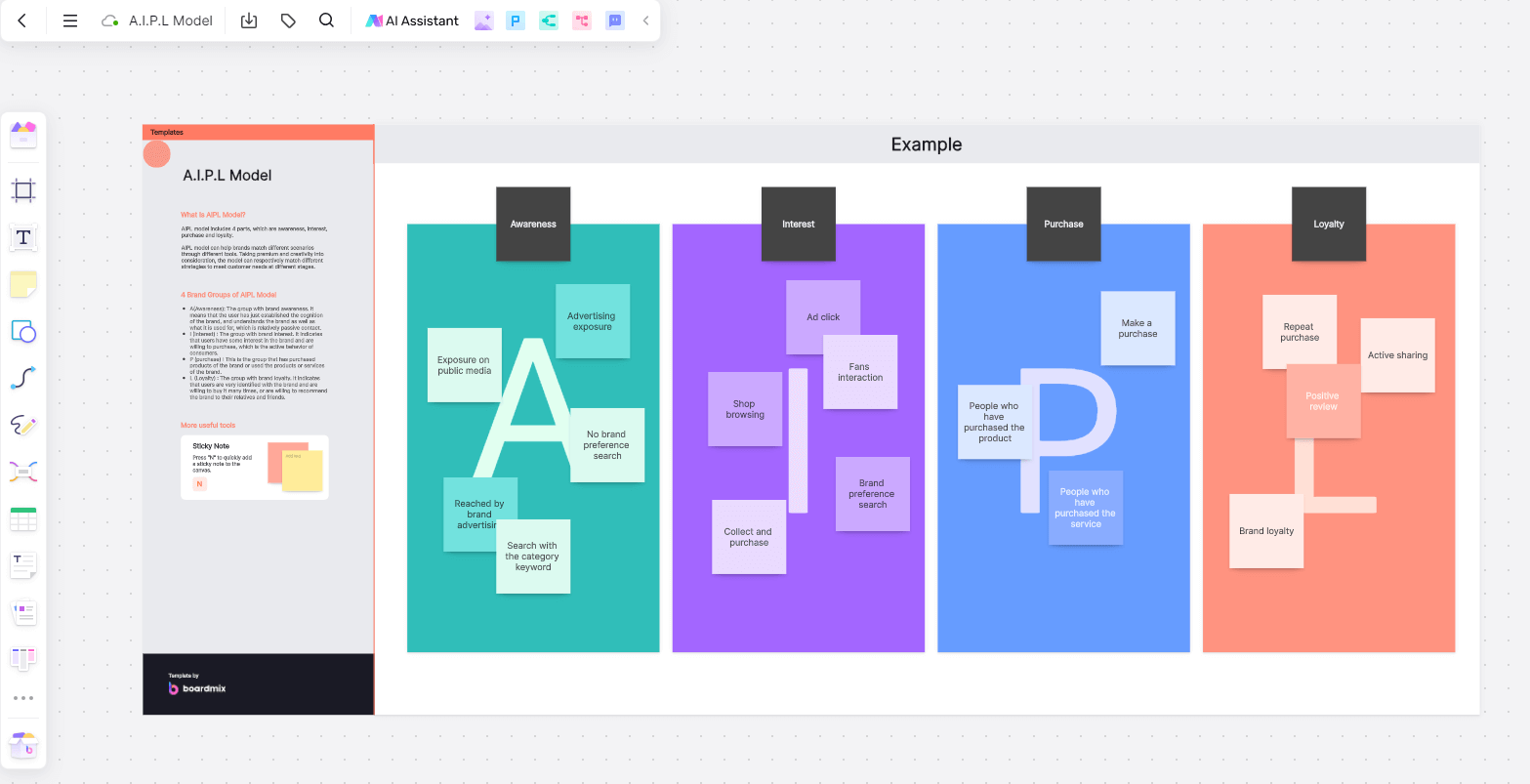
Awareness: The first stage is where the potential customer becomes aware of your brand or product.
Interest: At this stage, the customer expresses interest in your product or services and seeks more information.
Preference: The customer begins to evaluate options and forms a preference for your product over the competition.
Loyalty: The final stage is where the customer not only purchases your product or service but becomes a repeat customer and even advocates for your brand.
The AIPL model describes the process by which users transition from becoming aware of a brand, clicking on it, developing interest, making a purchase, and ultimately becoming loyal customers.
Application of the AIPL Model
The model assists merchants in meeting the needs of customers at different stages by utilizing various paid tools and strategies. On platforms such as Taobao, this process is manifested from exposure, clicking, adding to favorites or cart, completing a transaction, to repeating purchases or referrals.
Brand Audience Assets
The AIPL model has enabled the quantification and operational linkage of brand audience assets. These assets include individuals who have heard about, consumed, or frequently purchased the brand's products. The AIPL model quantifies these audiences through Data Bank and the unified identity of users within the Alibaba ecosystem, known as UNI-ID.
Audience Segmentation
A (Awareness): The brand-aware audience, such as those reached by brand advertisements and category keyword searches.
I (Interest): The brand-interested audience, including those who have clicked on ads, browsed the brand's homepage, engaged in brand interactions, viewing product detail pages, searched for brand keywords, claimed trials, subscribed/followed/joined, or added items to their cart or favorites.
P (Purchase): The brand-purchasing audience, refers to individuals who have bought products from the brand.
L (Loyalty): The brand-loyal audience, which includes those who make repeat purchases, provide reviews, and share information.

Implementation of the AIPL Model
Initially, analyze the current A-I-P-L audience assets of the brand for any issues through the Data Bank, and then adopt strategies to address these problems. For instance, to tackle the issue of having too few audience members, one can deploy brand advertisements through internal resources or integrate resources from the brand's marketing department to attract new customers. For the issue of a low conversion rate from the I to P audience, segmenting the I audience based on tags and pushing relevant information can improve conversion.
Practice: 3 AIPL Model Examples for Brands
Here are the hypothetical application cases for the AIPL model for Apple, Adidas, and Google. Note that these cases are constructed based on the general principles of the AIPL model application and each brand has its unique marketing strategies and execution details.
1. AIPL Model for Apple

A (Awareness): Apple enhances brand awareness through its innovative product design and marketing campaigns, such as product launches and advertisements. They utilize social media and online advertising to attract potential customers and increase brand exposure.
I (Interest): Apple fosters user interest by providing detailed product information on its official website and retail stores. They also engage users in online forums and community discussions and maintain interest through email marketing that highlights new product information and special events.
P (Purchase): Apple's online and physical stores offer a seamless shopping experience, from product trials to purchases, facilitated by loyalty programs and installment payment options.
L (Loyalty): Apple's loyalty programs, such as Apple Music subscriptions and AppleCare warranty services, along with high-quality customer service, strengthen customer loyalty. Additionally, the Apple ecosystem (iOS and macOS) encourages long-term customer loyalty.
2. AIPL Model for Adidas
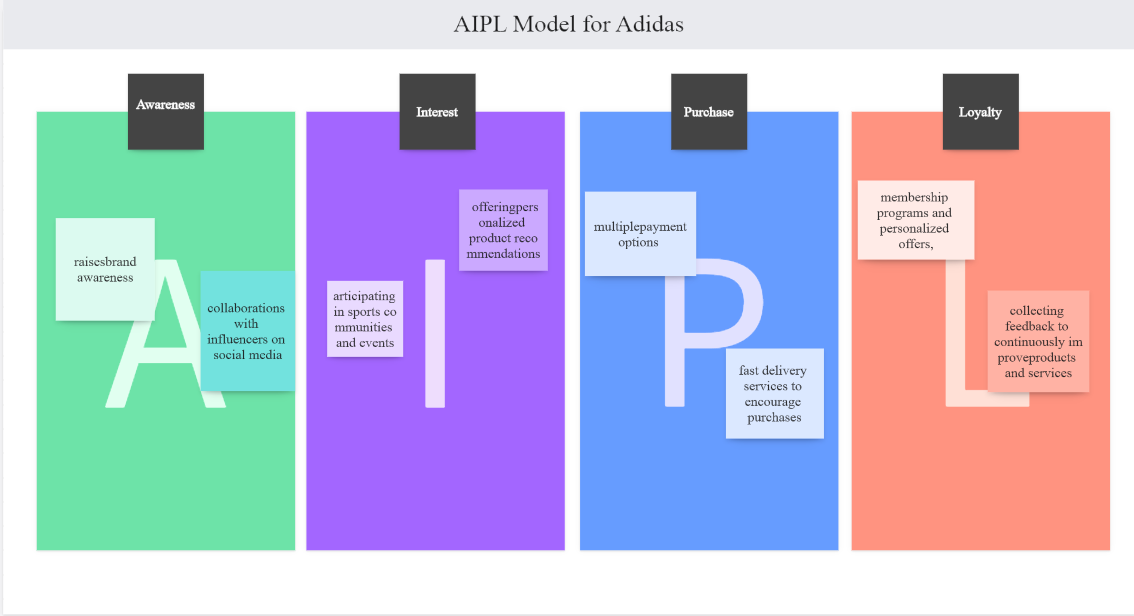
A (Awareness): Adidas raises brand awareness through sports event sponsorships and athlete endorsements, as well as collaborations with influencers on social media.
I (Interest): Adidas engages users by offering personalized product recommendations on its website and app and by participating in sports communities and events to increase user interest.
P (Purchase): Adidas's online shopping experience is straightforward and quick, with multiple payment options and fast delivery services to encourage purchases.
L (Loyalty): Adidas rewards loyal customers with membership programs and personalized offers, and enhances customer loyalty by collecting feedback to continuously improve products and services.
3. AIPL Model for Google

A (Awareness): Google increases brand awareness through the widespread use of its search engine and various online services such as Gmail and Google Maps.
I (Interest): Google attracts users by offering a range of free tools and resources, such as Google Scholar and Google Drive, which pique user interest in its products.
P (Purchase): For Google's paid services, like Google Workspace, the company offers trials and promotions to encourage user purchases.
L (Loyalty): Google maintains customer loyalty through continuous product innovation and superior customer support. Moreover, the seamless integration across devices and services also encourages users to continue utilizing Google's ecosystem.
AIPL Model Template: A Step-by-Step Guide on How to Draw It
Creating and visualizing your marketing strategy using the AIPL (Awareness, Interest, Preference, and Loyalty) model can seem daunting. However, with an intuitive online diagram maker like Boardmix, it becomes a straightforward and engaging process. Here's a step-by-step guide on how you can draw the AIPL model.
1. Setting Up Boardmix and Using AIPL Model Template
Sign up for a Boardmix account and create a new project like the AIPL Model for XYZ product'. Then, choose the AIPL Model Template by searching for it in the template library.
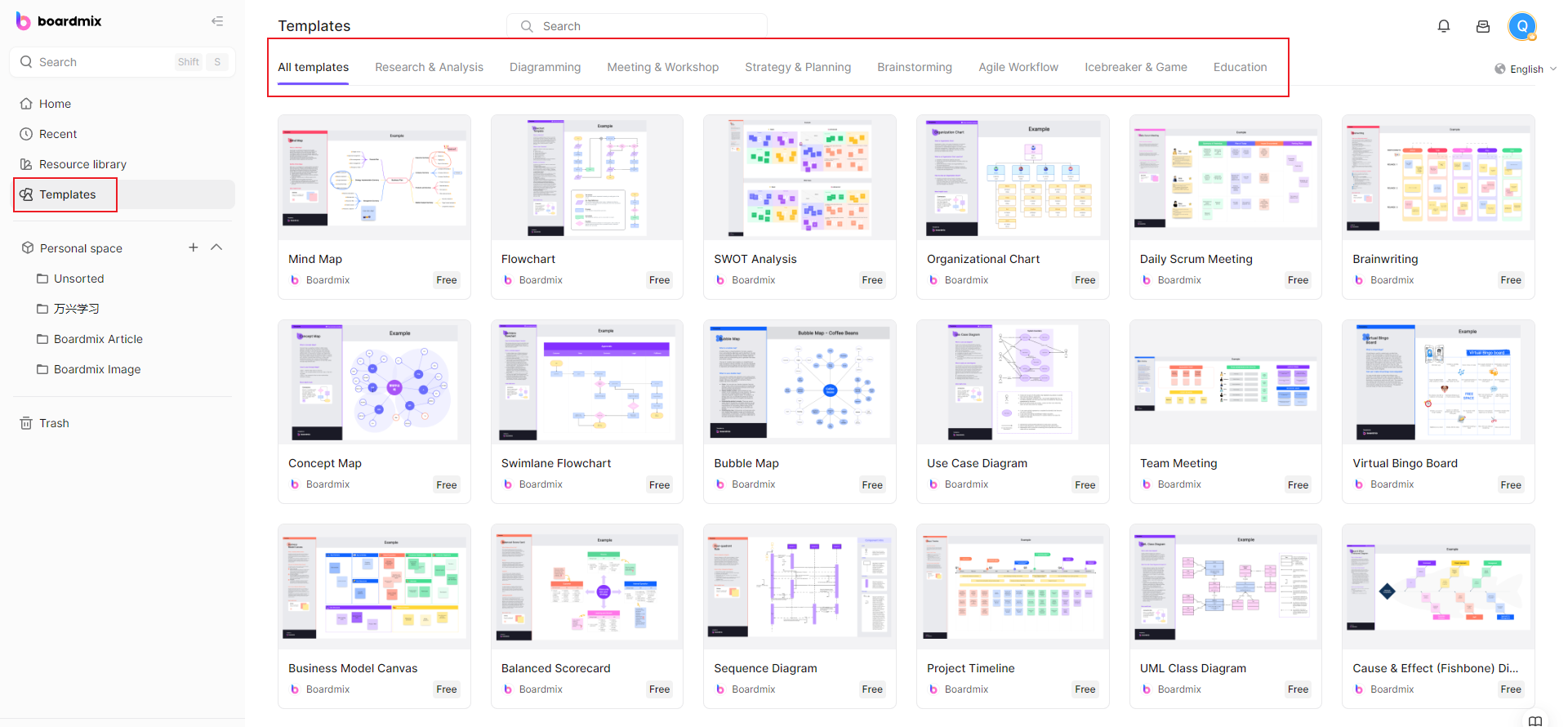
2. Creating the Awareness Stage
Use colored nodes or shapes to represent different steps or strategies under the Awareness stage. Consider these elements:
- Identification of target audience.
- The strategy to reach them.
- Crafting a compelling message.
You can add lines or arrows to show the progression or relationship between these steps.
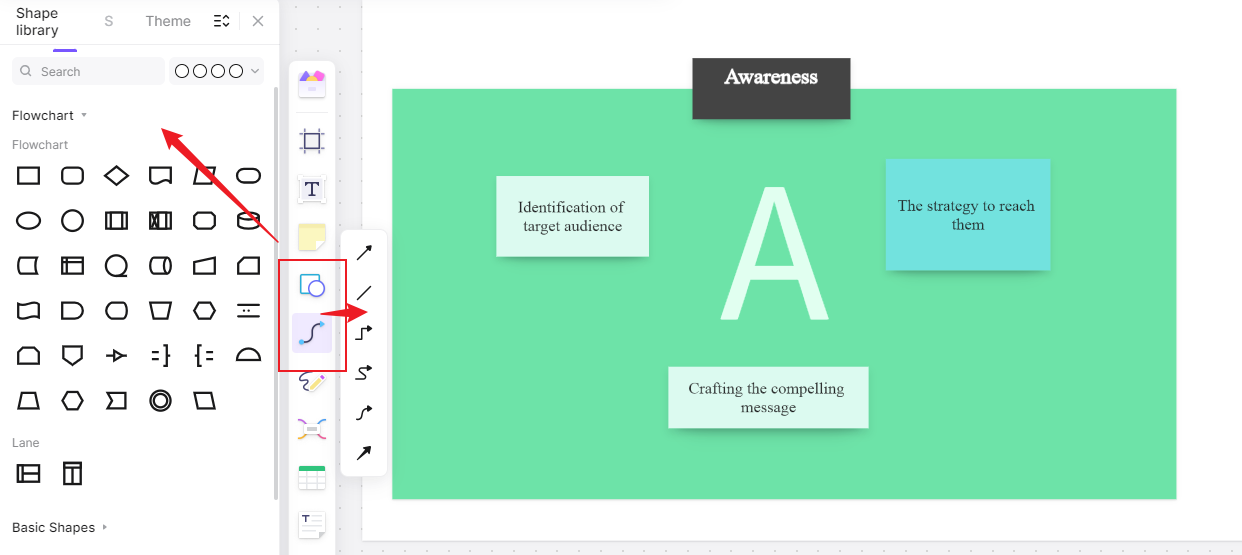
3. Building the Interest Stage Template
Next, create a similar structure for the Interest stage. Add steps such as:
- Determining relevant information.
- Planning educational content.
- Developing calls to action.
Using symbols or images from Boardmix's extensive library can add more visual interest to this stage.
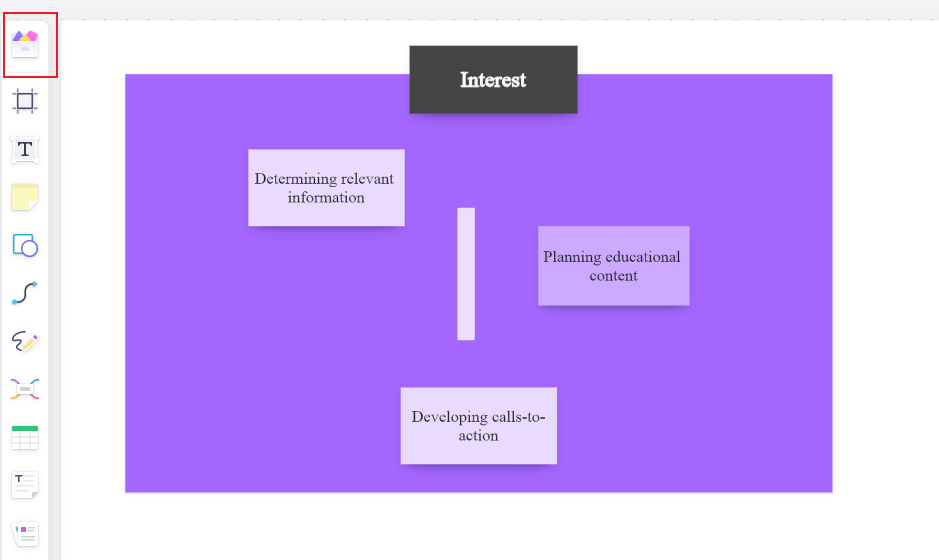
4. Designing the Preference Stage
For the Preference stage, highlight steps like:
- Identifying unique selling propositions.
- Planning communication strategies.
- Preparing case studies or comparisons.
Consider using different colors or styles for each stage to make your model more visually organized.
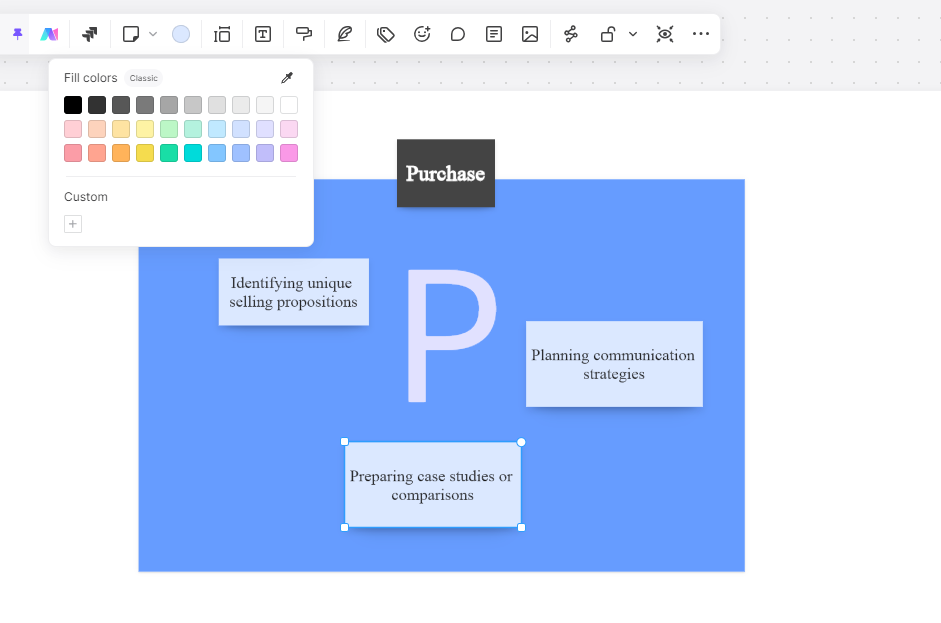
5. Structuring the Loyalty Stage
Finally, outline the steps involved in fostering loyalty:
- Determining value for repeat customers.
- Planning loyalty programs.
- Strategizing advocacy initiatives.
To add more depth to your model, you can link stages together using connectors or arrows, showing the flow from one stage to another.
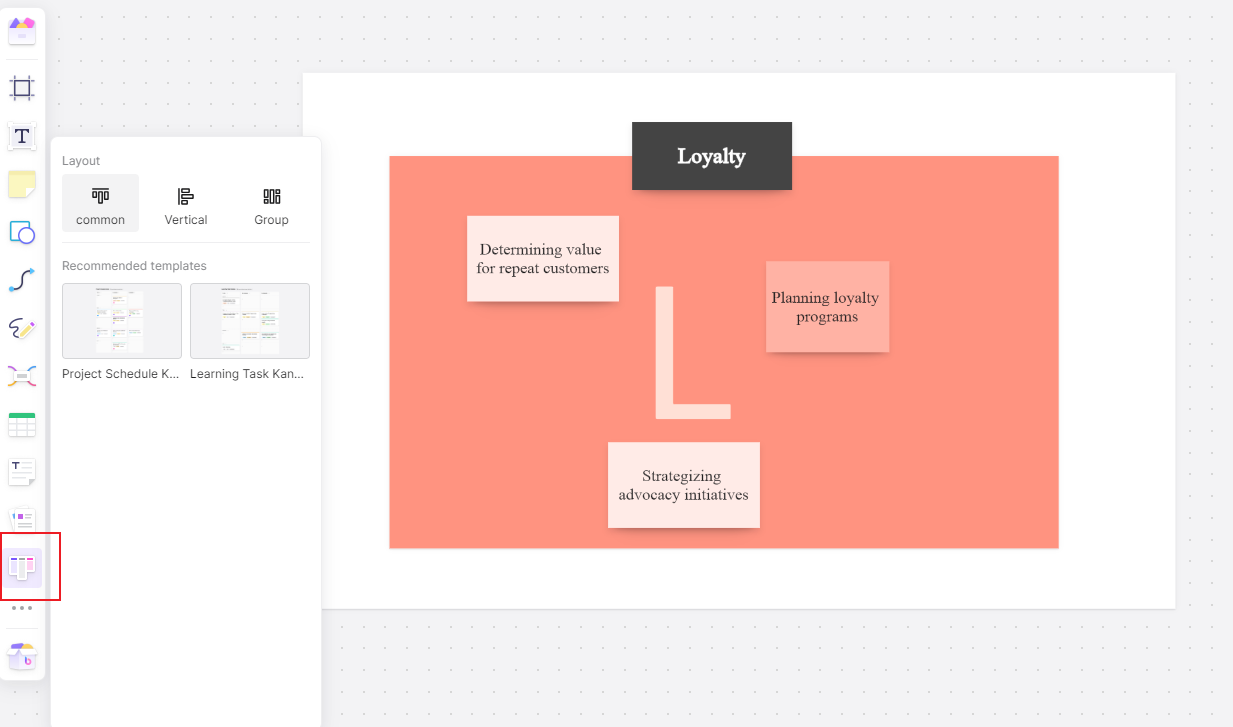
6. Adding Final Touches
Once you've structured all stages, you can add final touches like colors, fonts, or background styles to match your brand aesthetics. Don't forget to utilize Boardmix’s real-time collaboration feature if you're working with a team.
7. Saving and Sharing Your AIPL Model
When you're happy with your AIPL model, you can easily save and export it in various formats like PNG, PDF, or JPG. You can also share it directly with team members via email or a shareable link.
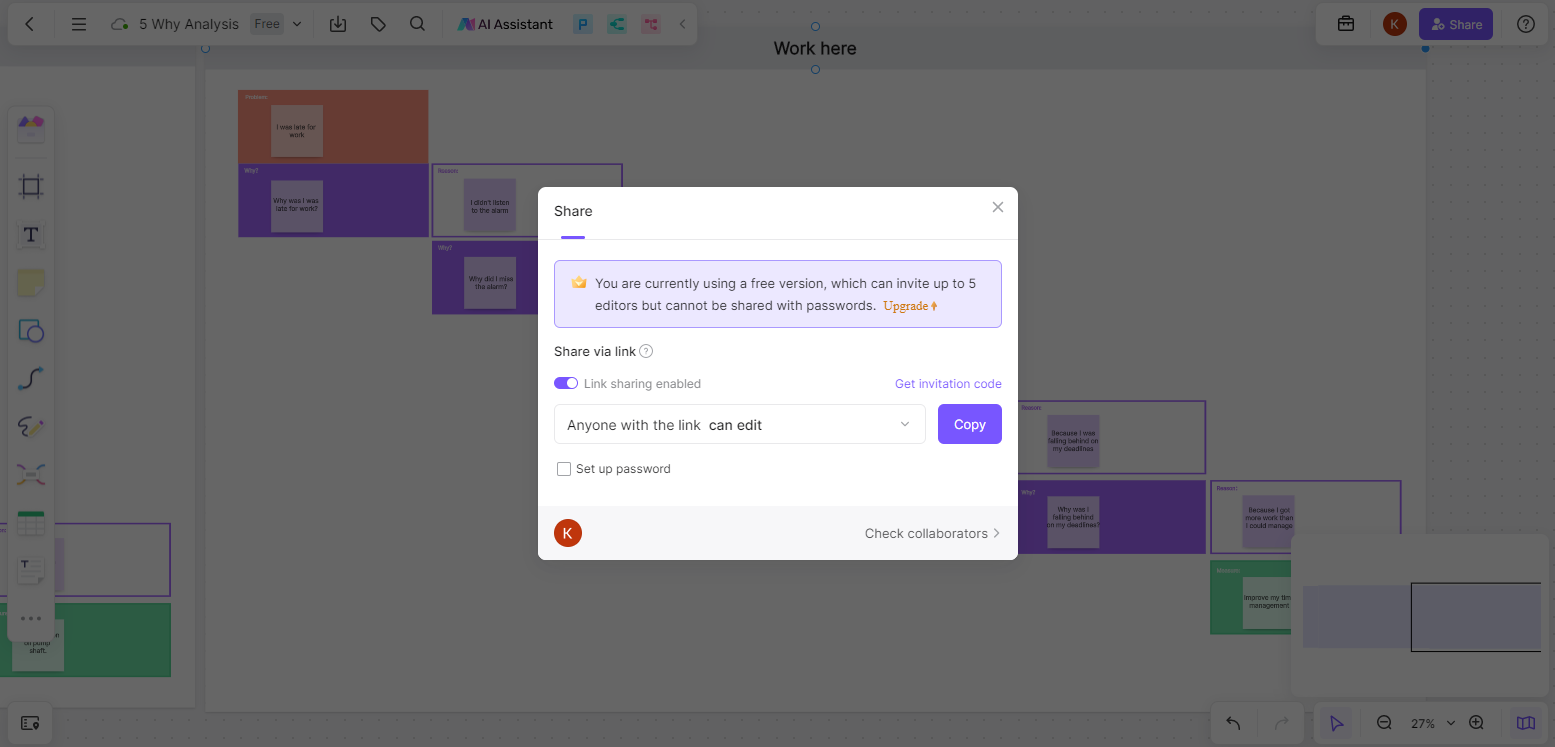
Drawing an AIPL model with Boardmix templates doesn't just help in visualizing your marketing strategy but also facilitates collaboration and sharing of ideas. It’s a creative process that brings clarity to your marketing goals and paves the way for a more organized approach to reaching your customers effectively.








